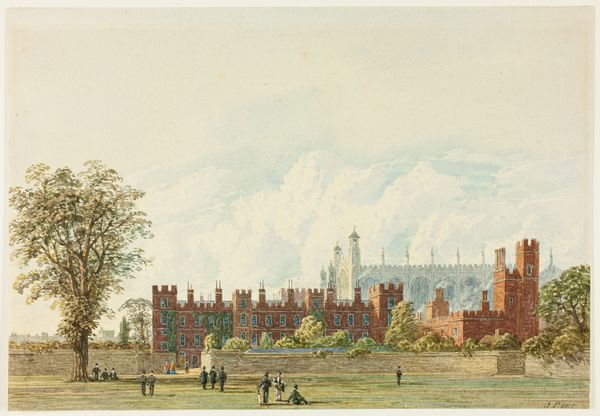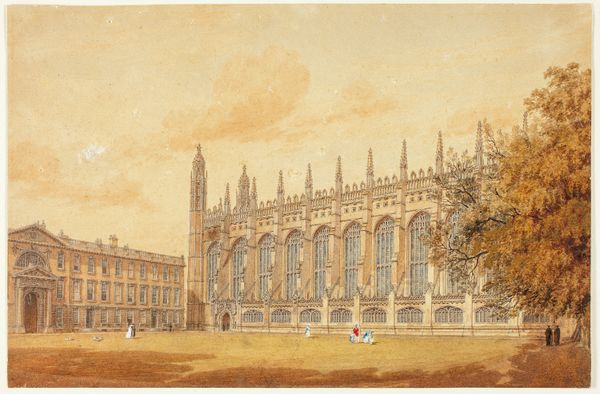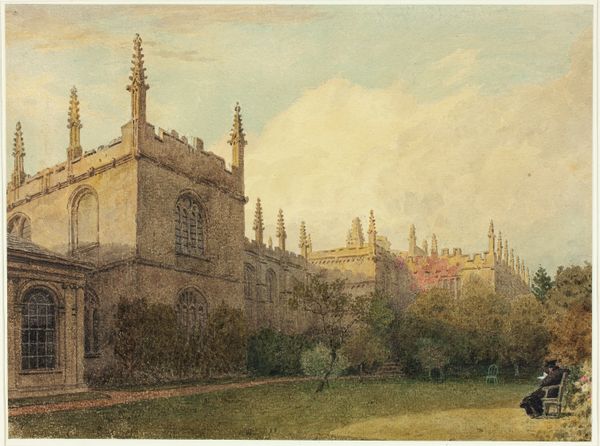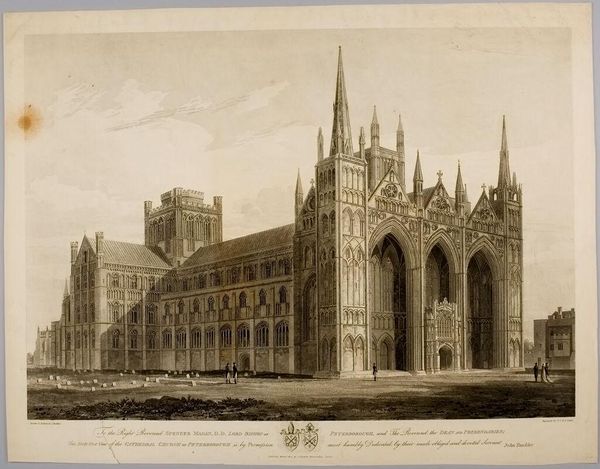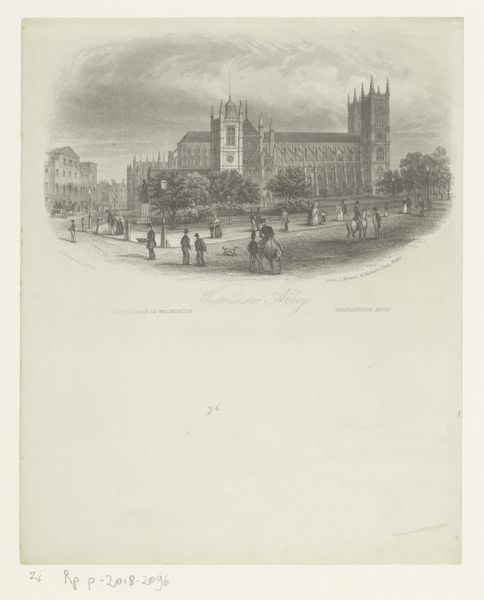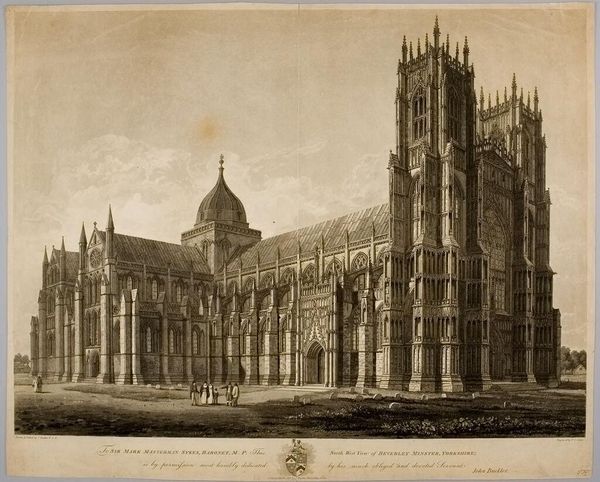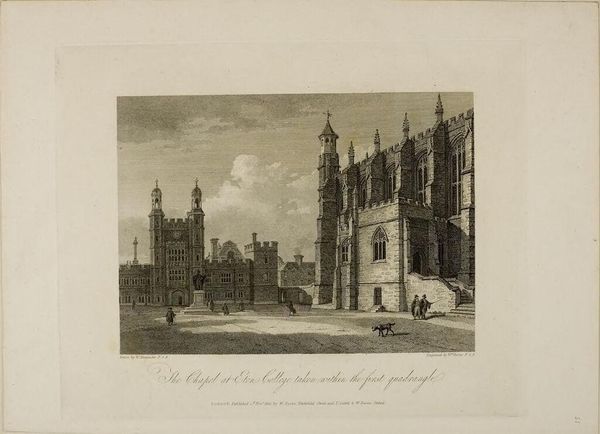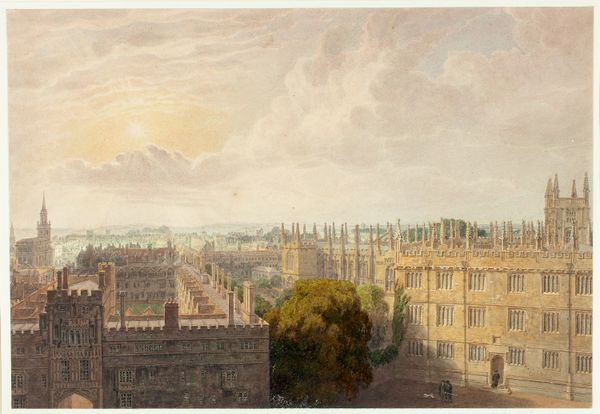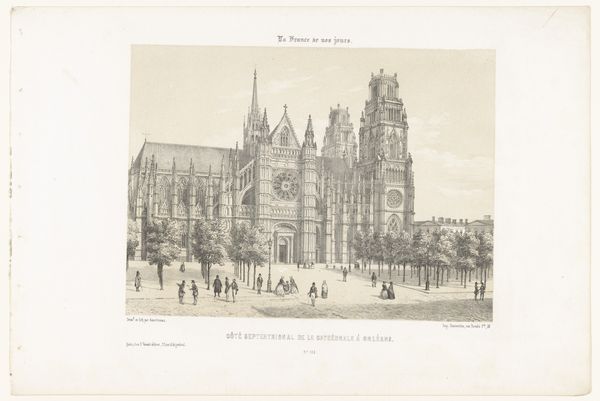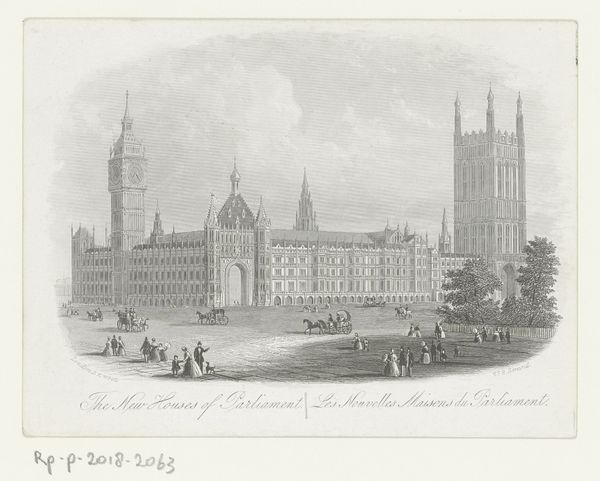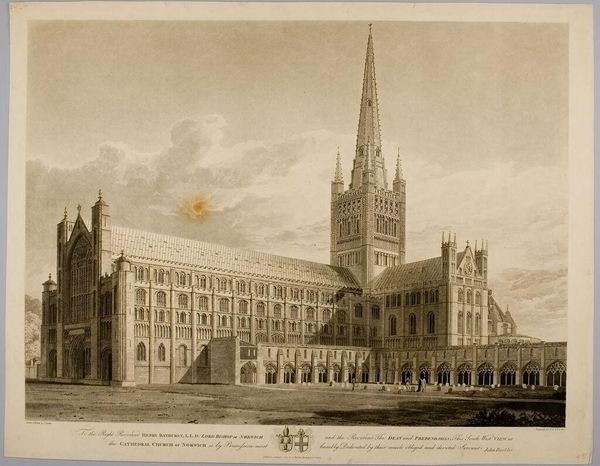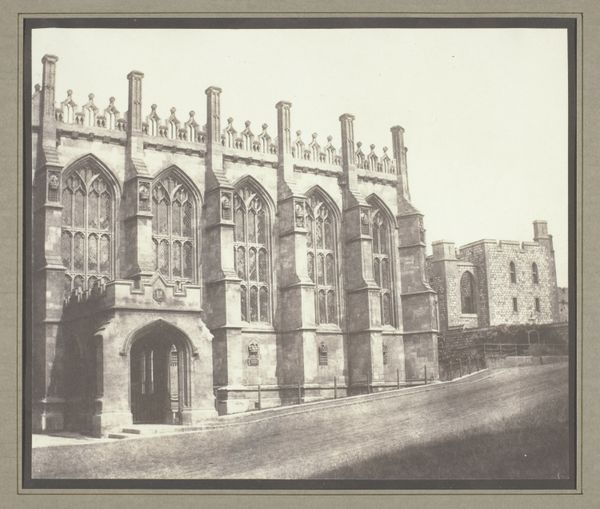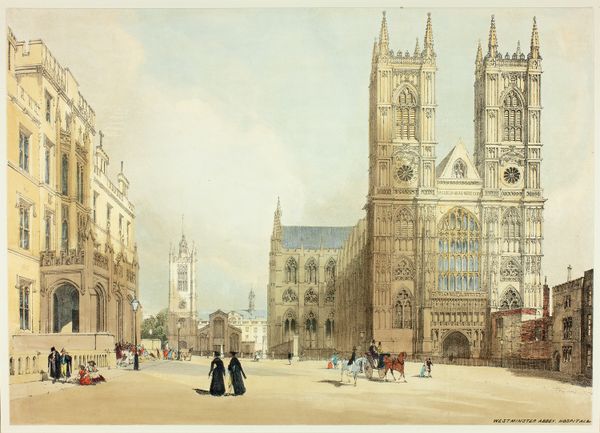
All Soul's College from the Radcliffe Library 1810 - 1820
0:00
0:00
drawing, print, paper, watercolor, architecture
#
drawing
# print
#
paper
#
watercolor
#
geometric
#
romanticism
#
cityscape
#
architecture
Dimensions: 202 × 287 mm
Copyright: Public Domain
Curator: Looking at this print by Augustus Charles Pugin, created sometime between 1810 and 1820, we see All Soul's College from the Radcliffe Library in Oxford. The medium involves drawing, watercolor and paper. Editor: It’s beautiful; so ethereal and precise. The scale seems vast, even intimidating, given the almost washed-out palette. What draws my attention, beyond the architecture itself, is how the watercolor lends this dreamlike quality to very solid, very deliberate forms. Curator: Precisely. Pugin was quite influential in promoting Gothic Revival architecture. Consider this as a piece reflecting the architectural and social aspirations of 19th-century Britain, where institutions like Oxford held significant cultural power. It's not just a cityscape; it’s a statement about national identity and history. Editor: I agree about that. It does scream of an era, but the actual making of it involves a different dimension. Can we really separate the pigments he used, the specific paper, and his technique from the final statement? The Romanticism here isn’t just stylistic; it’s embedded in the choices made with tangible matter. Did the industrial production of pigments during that time influence the watercolor effects? Curator: Absolutely, thinking of the socio-economic context, the availability of specific materials surely played a role. What's remarkable is the public's access to these institutions during that era and how artists acted almost like PR for establishments and architectural achievements such as these. Editor: See, that is quite important to analyze because the labor that built All Soul's College and the Radcliffe Library would've been an entirely different story. This artwork prettifies complex labour relationships of production, consumption, representation… Curator: It is an idealized vision for public consumption. Still, understanding its original context allows us a better insight into how the period perceived its institutions. It certainly encourages looking closer at these themes. Editor: Indeed! The building materials themselves and the labor relationships within this piece's subject opens a rich discourse!
Comments
No comments
Be the first to comment and join the conversation on the ultimate creative platform.
